
The lotus is loved by the Vietnamese not only for its beauty, but also for its image of purity, rising from the mud without being contaminated. The lotus has appeared in folk songs, poetry, the spiritual life and memories of many generations.
"In the pond, nothing is more beautiful than lotus
Green leaves, white flowers, and yellow stamens
Yellow stamens, white flowers, green leaves
Near the mud but not smelling of mud"
Many localities have chosen to grow lotus in low-lying, swampy areas. Initially, the lotus has proven its value: easy to grow, water-resistant, disease-free, flowers and seeds.
However, for a long time, the economic problem of lotus has remained at the level of “escape from poverty”. In many places, lotus is only grown for its flowers or seeds. The remaining parts such as leaves, shoots, calyxes, stems, tubers, etc. are often left behind, becoming a waste by-product.
The economic life cycle of the lotus is therefore as short as the flower season itself, blooming for a few months and then fading, leaving behind a potential that has not been “awakened”. For many years, the lotus has been considered only a seasonal crop.

Over the past decade, scientists from the Fruit and Vegetable Research Institute - one of the leading units in the field of plant breeding, have implemented a program to collect, preserve and select dozens of precious lotus gene sources in traditional growing areas such as Dong Thap, Hanoi, Thua Thien Hue, Bac Ninh, Ninh Binh...
To date, the Vegetable Institute has collected and preserved a group of 12 best lotus varieties, including both native and imported lotus, to serve the breeding of new varieties.
Many precious lotus varieties have been restored such as Hue white lotus, Quan Am lotus... and many useful foreign varieties have been introduced such as Japanese lotus, Indian lotus (flowering in winter) or Oga lotus, Kanasumi (Japan) which can withstand cold well.
Lotus varieties used for tubers and shoots were also imported from Japan, India, etc., helping Vietnam to have for the first time high-yield, good-quality lotus shoots and tubers.
Based on rare genetic resources, scientists have successfully selected and created many promising lotus varieties, meeting each usage target, specifically: lotus varieties for seeds SH01, SH02, SH03; lotus varieties for ponds, lakes, and low-lying fields SCH01, SCH02, SCH03; and lotus varieties for potted plants SCC01, SCC02, SCC03.
In the trial planting locations, these new lotus varieties have been evaluated in detail on factors such as variety characteristics, yield, product quality (flowers; seeds), as well as market acceptance.
In particular, new lotus varieties are not only highly applicable but also clearly demonstrate a specialized orientation, instead of exploiting "multi-purpose" as before.

The diversity of gene sources has created the foundation for year-round lotus production: there are varieties that bloom in summer, varieties that bloom in autumn, even Indian white lotus varieties that bloom right on Tet, or cold-resistant Japanese lotus that blooms in the middle of winter.
Thanks to that, the model of growing lotus in Ninh Binh, Hung Yen... has become a reality, extending the flowering season to 8-9 months, significantly increasing revenue from tourism and lotus harvesting.
According to Dr. Nguyen Thi Hong Nhung, Department of Breeding, Center for Research and Development of Flowers and Ornamental Plants (Institute of Vegetable and Fruit Research), advanced breeding technology is also applied to ensure the quality of lotus seedlings.
Nowadays, instead of separating seeds or tubers as traditionally, most lotus varieties are propagated by tissue culture in the laboratory, helping to create disease-free, uniform seedlings that grow well when planted en masse.
“The lotus breeding process is a series of intensive steps, starting from collecting and evaluating material sources, followed by sexual crossbreeding to create genetic variation, and then selecting promising hybrid lines.
We also apply tissue culture technology and conduct experiments in many ecological regions to screen lotus varieties with real potential," Dr. Nhung analyzed.
Different from traditional methods, the current process integrates modern technologies such as molecular markers to guide selection, or cell tissue culture to shorten propagation time and increase accuracy.
Thanks to that, new lotus varieties have outstanding productivity and quality, high disease resistance, good adaptability and meet many needs.
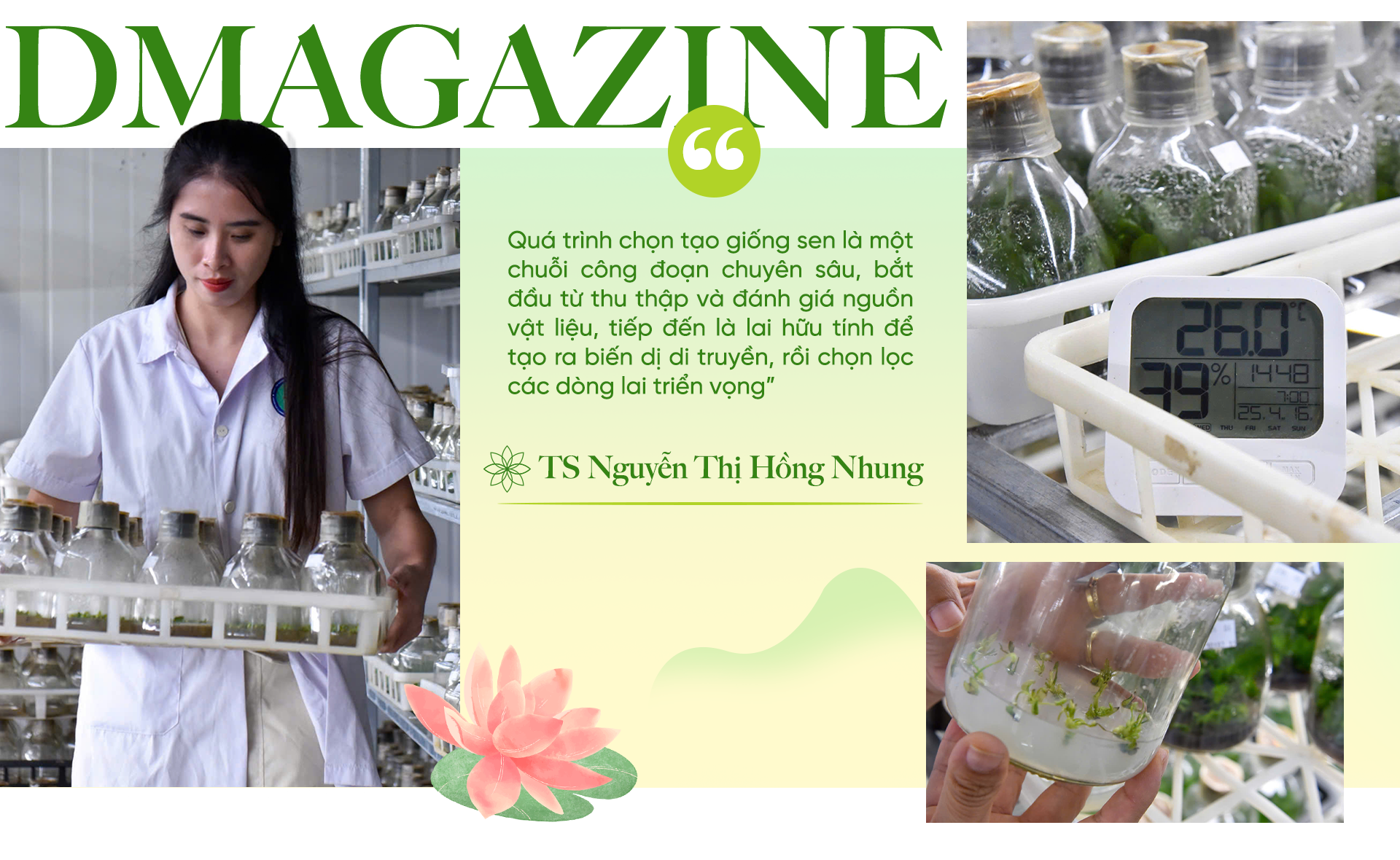
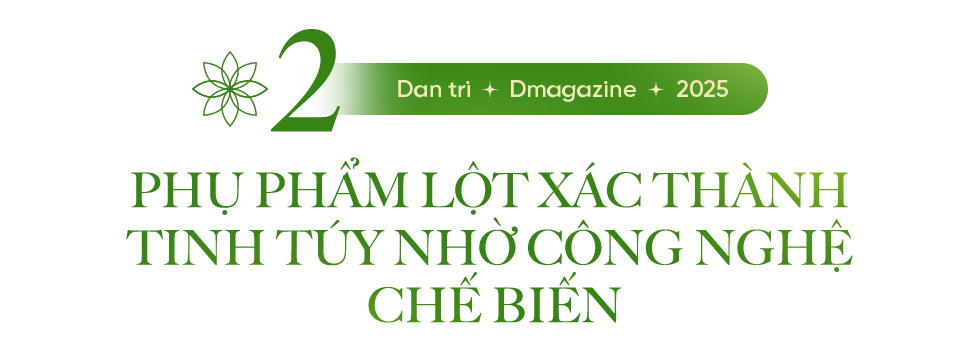
Lotus is loved for its pure beauty, but that beauty will forever remain in the village pond if not awakened by technology. From a plant associated with poetry and rituals, lotus is gradually becoming a valuable source of raw materials in modern agriculture.
Growing lotus is difficult, but developing lotus into an effective economic sector is even more difficult. Only when science and technology are applied systematically can each part of the plant be fully exploited, opening up its true economic potential.
In that journey, processing is the key point. Associate Professor, Dr. Dang Van Dong - Deputy Director of the Institute of Vegetable and Fruit Research, calls this "the decisive link in the lotus value chain".
Scientists at the Fruit and Vegetable Research Institute have researched and transferred many modern processing technologies: drying lotus seeds with infrared to preserve the color and nutrients; extracting essential oils from lotus leaves and shoots as cosmetic ingredients; producing lotus heart powder and lotus leaf tea; and especially soaking lotus tea using the traditional but semi-mechanized method to both preserve the pure lotus scent and save effort and time.
Thai Binh (old) is one of the localities that early approached technical advances and quickly turned technology into concrete results in the fields.
In Hong Minh commune, ineffective, abandoned low-lying rice fields have been converted into specialized lotus growing areas.
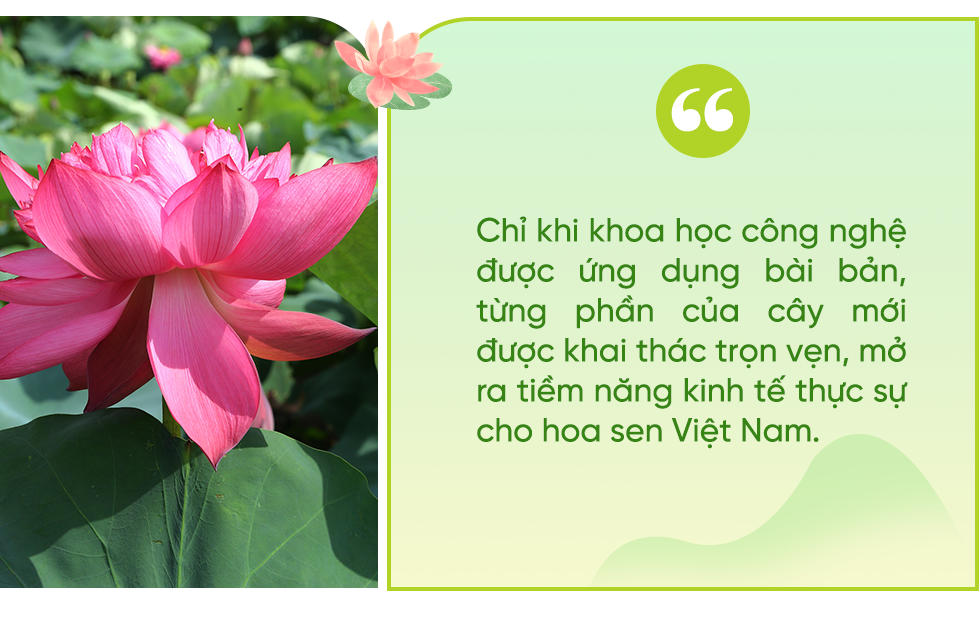
In 2021, Sen Van Dai Cooperative was established, implementing a systematic model on an area of 6 hectares, with a different approach: not mass-growing one type, but dividing plots according to each variety suitable for processing purposes.
The flower variety is used to make tea, the seed variety is used to make lotus seed milk, the root variety is used to make jam or dried, the shoot variety is used for food processing. The entire process strictly follows the technical instructions from the Institute.
According to the cooperative representative, many lotus varieties grown here are promoting their strengths, bringing stable income to the people.
The lotus variety specialized for tea-scented flowers yields about 40,000 flowers per 1,000m² after 6 months, or about 400,000 flowers per hectare per flowering season. Fresh lotus flowers are harvested daily, both for sale as flower arrangements and for supplying to high-end tea-scented establishments.
With lotus seeds, the fruit set rate reaches 98%, providing stable and high quality output. After harvest, lotus seeds are processed into lotus seed milk, jam, nutritional powder, serving the food and medicinal markets.
Lotus shoots (young stems) yield an average of 150-200kg/ha per crop, which are processed into vegetables or specialties such as salads. Meanwhile, lotus tubers are harvested after about 3 months of planting, with a yield of 9-10 tons/ha/crop, with a selling price of 40,000-45,000 VND/kg of fresh tubers.
Each hectare of lotus root can bring in 300-400 million VND per crop for farmers. The products are sold fresh or processed further: dried lotus root, jam, pickles...
Along with fresh products, the Cooperative also invests in deep processing: lotus tea combined with Tan Cuong tea, pickled lotus root, dried lotus, fried lotus... Every day, the Cooperative supplies 500-1,000 fresh lotus flowers, about 200kg of lotus roots and sprouts, and exports 4 tons of lotus leaves to the market each month to serve the production of weight loss tea and sedative tea.

Dong Thap is a province in the Mekong Delta, which has long been famous for its vast lotus fields that have been featured in poems and songs. In Dong Thap, lotuses are grown in vast fields, from the streets to the homes of people, making lotuses appear everywhere.
Currently, Dong Thap is developing according to the value chain associated with circular economy and green growth. Therefore, the People's Committee of Dong Thap province requires relevant departments, agencies and units to focus on researching and supporting the development of deep processing industry for new lotus products (mixed products, high value-added products, vegan products, etc.) according to the needs of production and business units and supporting the development of consumer markets for products according to market signals.
In addition, digital transformation is also applied: many lotus cooperatives have opened booths on e-commerce platforms, promoted products on social networks, helping lotus specialties reach further to customers everywhere.
The involvement of science and technology in the entire value chain – from seeds, cultivation to processing and marketing – has been empowering Vietnamese lotus to reach new heights.

At 8:30 p.m. on April 14 (Vietnam time), Vietnamese-American astronaut Amanda Nguyen, singer Katy Perry, and four other women made history by participating in the first all-female spaceflight on Blue Origin's New Shepard spacecraft at the West Texas launch site (USA).
On this special flight into space, Amanda Nguyen brought 169 Vietnamese lotus seeds.
These precious seeds were selected from native lotus varieties at the Center for Research and Development of Flowers and Ornamental Plants, jointly conducted by the Vietnam National Space Center (VNSC) and the Vietnam Academy of Science and Technology (VAST).
The lotus's journey into space is a milestone in the "take-off" journey of the flower that Vietnamese people are always proud of.
According to Associate Professor Dr. Dang Van Dong, the journey to elevate the lotus plant still has a very long way ahead.
After more than a decade of research and selection efforts, the Vegetable Research Institute has collected about 80 lotus varieties from both domestic and imported countries, including many specialized lotus varieties such as lotus for flowers, seeds, tubers and shoots.
Based on that gene source, the Institute has crossbred hundreds of hybrid individuals and built an evaluation model with about 360 promising hybrid lines, many of which have a seed germination rate of up to 80-100%.
However, according to Associate Professor Dong, that is still not enough for lotus to really take off as a key economic sector.
“The lotus plant still has a lot of potential to exploit. What we have done is just the beginning,” he shared.
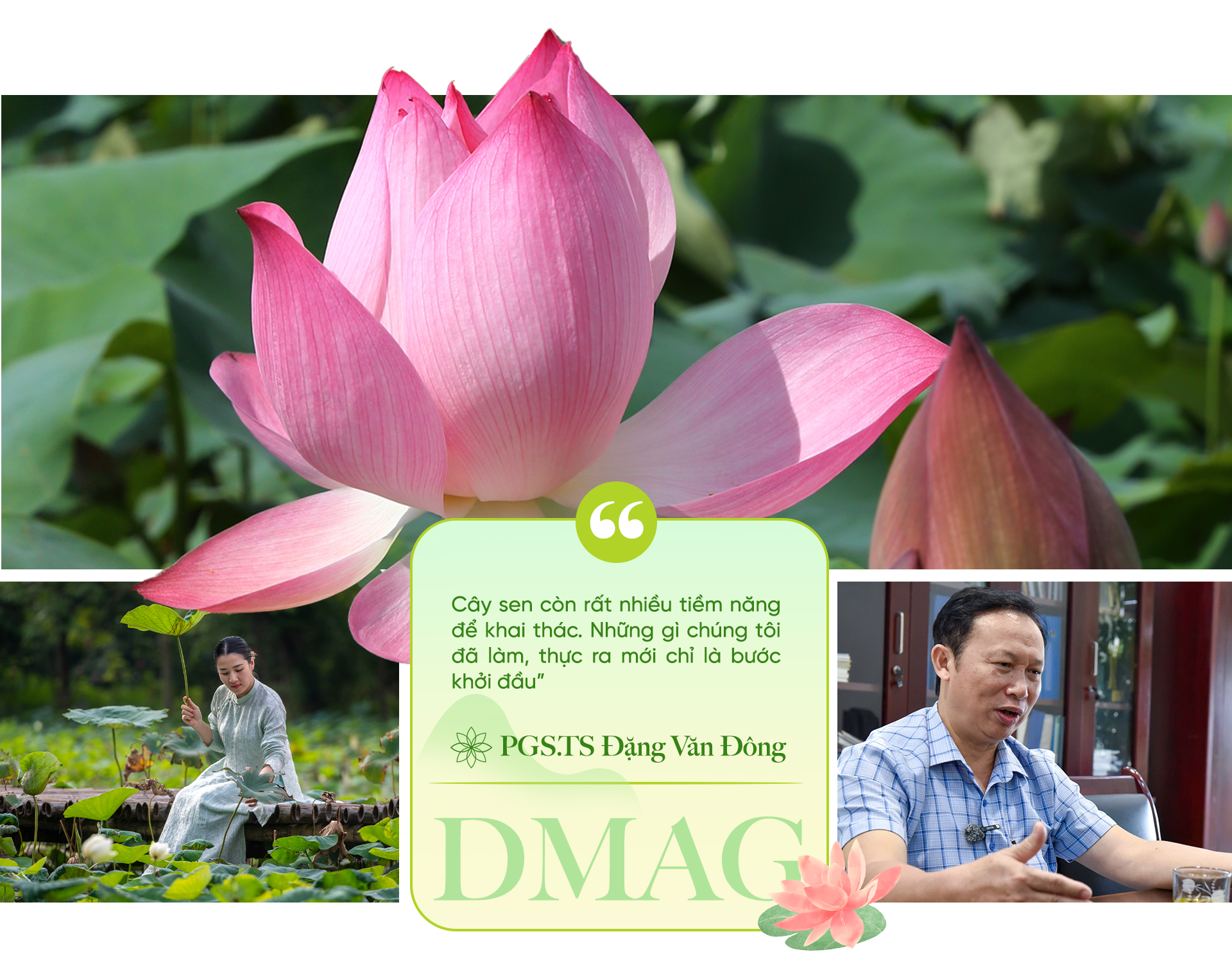
In the coming time, the first task that the Institute has identified is to continue to improve the lotus variety in the direction of specialization. Each exploitation purpose requires different requirements in terms of growth characteristics, fragrance, productivity and adaptability.
“The West Lake lotus variety is very famous for its distinctive fragrance, but has a short harvest time and is sensitive to cold. The problem is to create a lotus variety that retains the “soul” of West Lake but has longer lasting flowers, is more resistant to cold, and has a higher yield,” Associate Professor Dong explained.
In addition, the quality of lotus seeds also needs to be improved: not only increasing productivity but also improving nutritional content, germination rate, and resistance to pests and diseases. This is a prerequisite for lotus to be able to compete sustainably and meet increasingly strict market requirements.
Not only stopping at fresh production, the Institute is also promoting research on deep processing - a key piece to complete the lotus value chain. According to this expert, the current market, especially young people, favors convenience, so products such as lotus tea bags, instant tea, ready-to-drink lotus powder or lotus essential oil with natural fragrance will be potential directions.
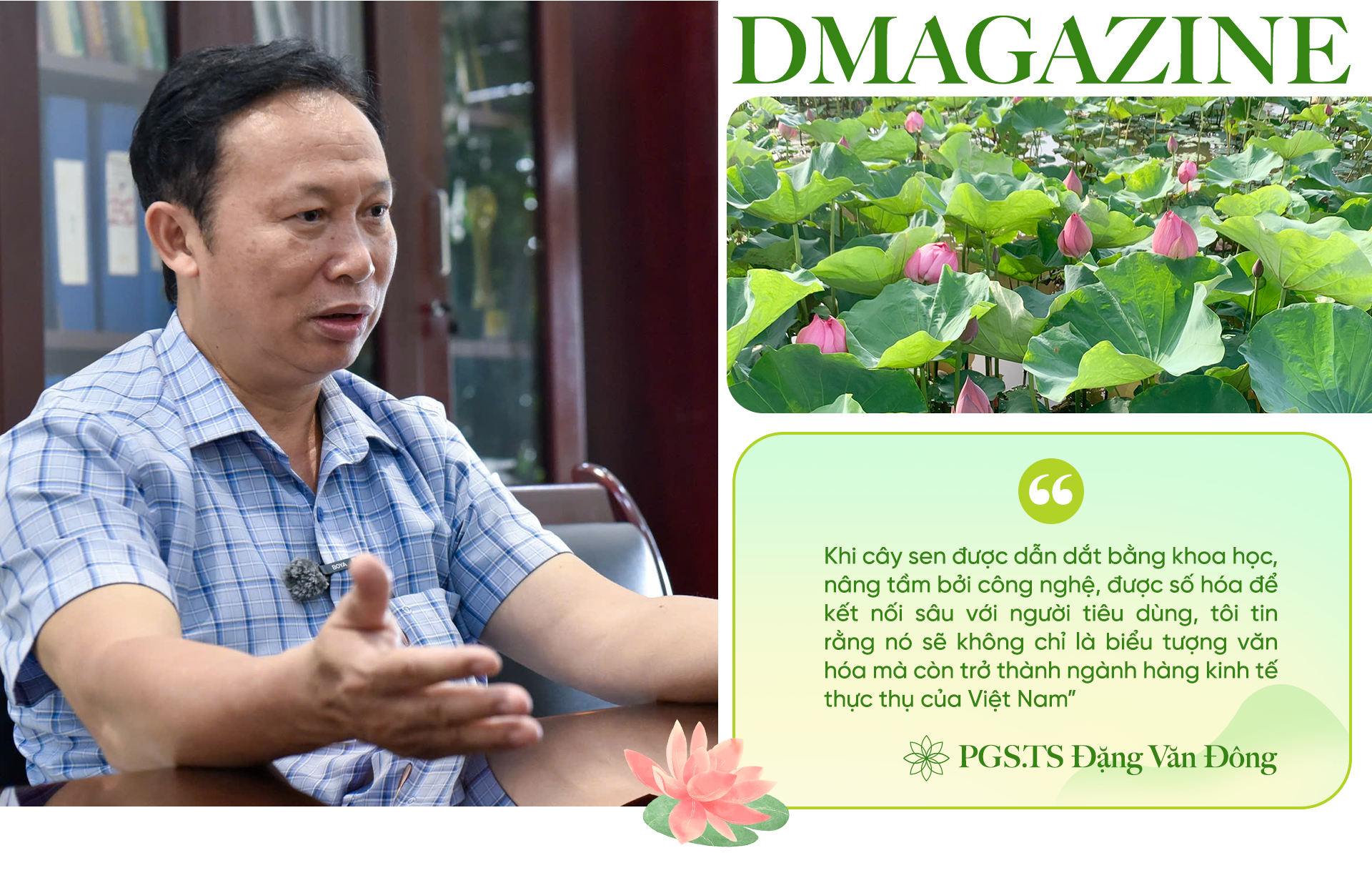
Along with product development, Associate Professor Dong believes that it is necessary to focus on sustainability: from organic lotus growing processes to linking lotus with community tourism models. The goal is to build an integrated ecosystem, where scientists conduct in-depth research, farmers produce systematically, and businesses play the role of investors, connectors and consumers.
This expert believes that to do that, digital transformation is a must. Consumers do not need to go to the lotus pond, but they need to know where the products they use are grown, according to what process, and whether they are safe or not. Conversely, growers can also proactively grasp the market, update trends and connect with customers more easily.
“When the lotus is guided by science, enhanced by technology, and digitized to deeply connect with consumers, I believe that it will not only be a cultural symbol but also become a real economic sector of Vietnam,” Associate Professor Dong concluded.
Source: https://dantri.com.vn/khoa-hoc/chat-xam-viet-dua-cay-sen-vuon-minh-buoc-vao-chuoi-gia-tri-trieu-usd-20250817164052520.htm





![[Photo] Da Nang: Hundreds of people join hands to clean up a vital tourist route after storm No. 13](https://vphoto.vietnam.vn/thumb/1200x675/vietnam/resource/IMAGE/2025/11/07/1762491638903_image-3-1353-jpg.webp)
















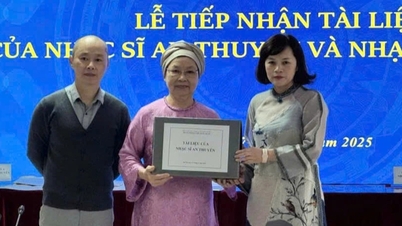






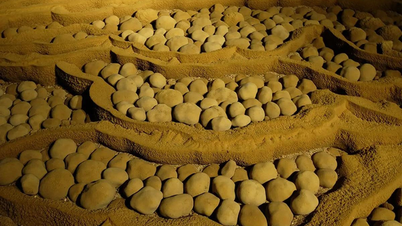






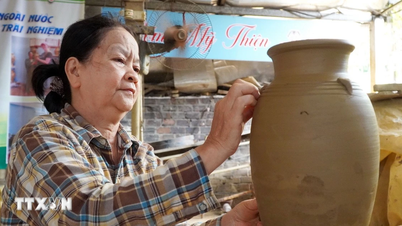













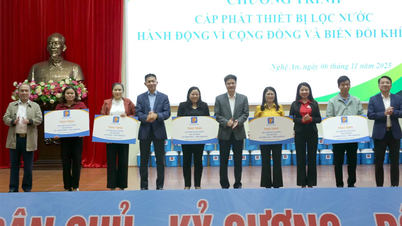



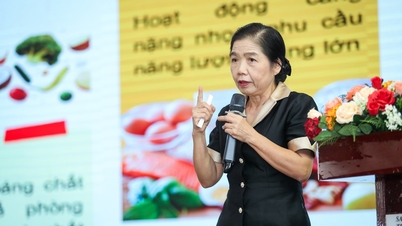














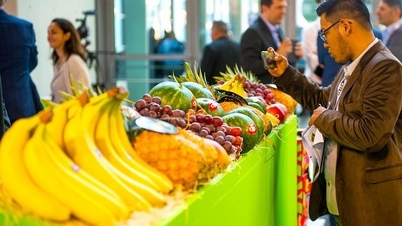


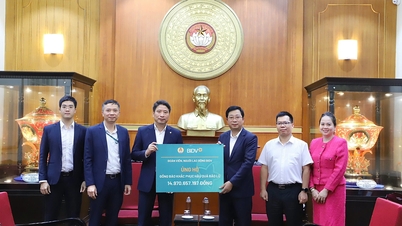

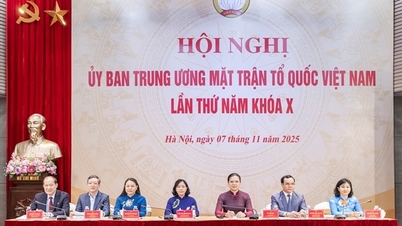
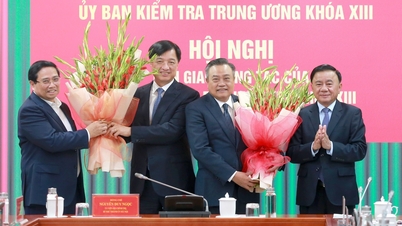


























Comment (0)